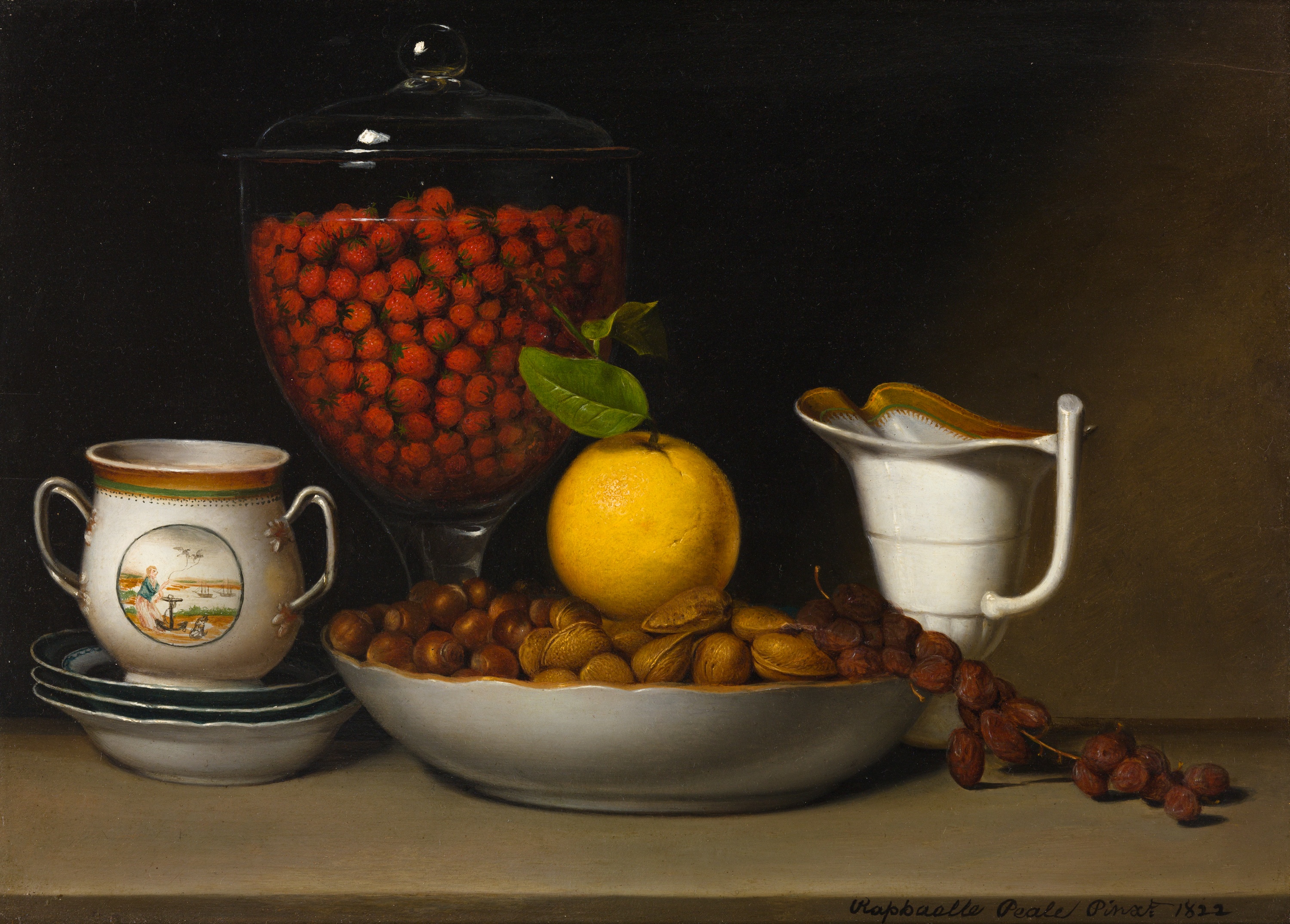During Raphaelle Peale’s time, the still life genre was not esteemed by most artists, relegated to the bottom of the hierarchy of painting subjects. Yet Peale ignored its low status and is now acknowledged as America’s first professional still-life painter and leading practitioner. Born into an artistic Philadelphia family, Raphaelle was the eldest son of Charles Willson Peale and the nephew of James Peale, both artists; his siblings were, like him, named after famous old master painters (he had brothers named Rembrandt, Titian, and Rubens).
Characterized by crisp forms and serenely balanced compositions, most of Peale’s still lifes portray food, crockery, and glassware arranged on a plain shelf, parallel to the picture plane. In this particularly fine example, the rhythmic balance of fruit, nuts, and Chinese export porcelain is enlivened by the diagonal branch of grapes becoming raisins and an orange leaf. These objects are brightly illuminated against a bare, dark background in the manner of the dramatic still-life compositions of 17th-century painters such as Juan Sánchez Cotán (which you can find in our Archive). Peale may have seen the Spanish artist’s work when it was shown at the Pennsylvania Academy of the Fine Arts in 1818.
If you're up for more beautiful still-lifes, please check our prints!
P.S. You can see the works of the Peale sisters in our selection of best works from the National Museum of Women in the Arts (NMWA)!


 Raphaelle Peale
Raphaelle Peale